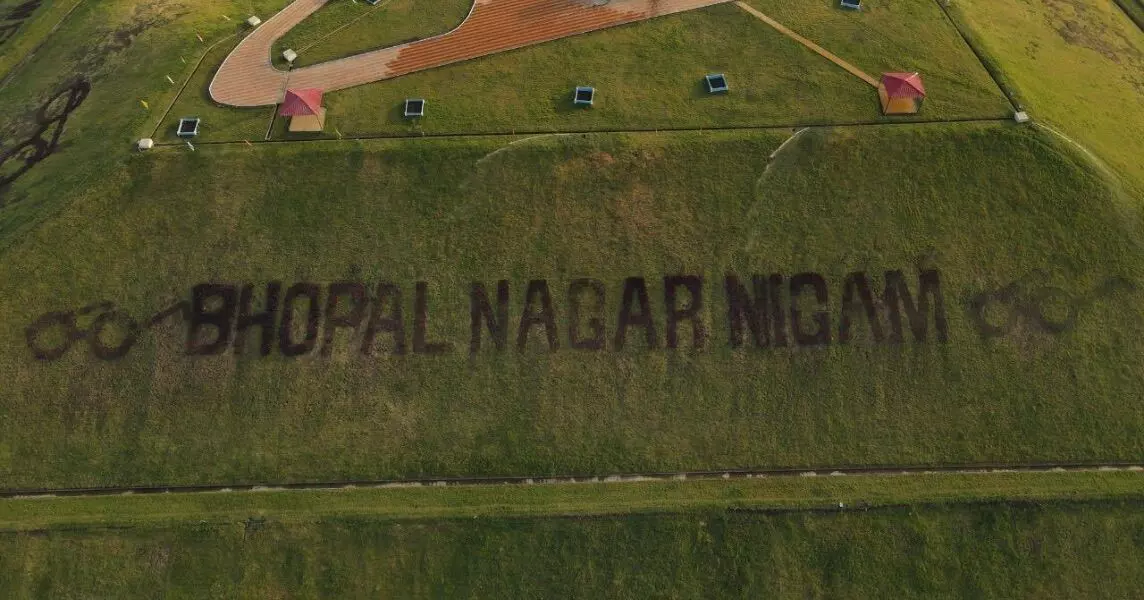
Bhopal’s Waste Management Triumph Amidst India’s Environmental Crisis
Bhopal was ranked the fifth cleanest city in India under the Swachh Survekshan Awards, 2023, held in New Delhi.
In Bhopal’s Bhanpur Khanti area, there is a dumpsite, which has been an eyesore for the citizens, spreading over 37 acres of land until 2018. A foul smell emanated from the landfill, spreading across the city. Although the residents of the area consistently complained about the towering garbage heap and foul stench, they were often met with institutional (governmental) negligence/apathy.. Similar to many other cities in India, Bhopal, too, was sitting on an enormous legacy waste in the dumpyard for over four decades.
“The continuous foul smell that floated through the air was overwhelming and made it really difficult to enjoy even simple activities outdoors. Our homes were constantly exposed to the toxic fumes. It felt like the air we breathed was contaminated,” Sudha Jain, a resident of Bhanpur Khanti, says about the poor air quality of the area that lasted for decades..
Jain, who runs a shop in the area, added, “The dumpsite has not only affected property values but also made it difficult to continue living here. It was disheartening to witness the degradation of the neighbourhood where we have lived for the past 25 years.”
The Bhopal Municipal Corporation (BMC) reportedly dumps over 800 tonnes of waste in Bhanpur every day. The total quantum of the waste that had accumulated in the 48-year-old dump-yard was estimated to be around 5 million tonnes. Thus, in 2018, Bhopal initiated a transformative journey to convert the dump-yard into a lush green zone.
According to Yogendra Patel, BMC Deputy Commissioner (Health), “Bhanpur was extremely unhygienic. Residents frequently complained about the situation. With the assistance of the government, the Nagar Nigam initiated a project to address the issue, leading to the commencement of the remedial process. The process began by segregating concrete and plastic waste from each other. Considering the substantial amount of waste, it was deemed impractical to transfer it to another location for processing due to the associated costs.”
Bhopal’s citizens played a pivotal role in this process by participating in awareness campaigns like “Team up to Clean up” and “Clean Bhopal,” Patel further explained. The campaign also included door-to-door garbage collection drives, and actively promoted waste segregation at the place of origin itself.
Presently, the garbage trucks operated by the BMC navigate the city twice a day, covering approximately 22,000 kilometres daily to collect waste. Sensors have been installed at the garbage dumps in order to enhance the efficiency and seamlessness of the entire process.
According to Satish Sinha, Associate Director of Toxic Link, “People who live near dumpsites inhale large amounts of waste particles, which are suspended in the air. The air quality around the land gets quite bad. The water around the area also gets critically contaminated.”
Methane emissions not only contaminate the air but also lead to the infiltration of harmful toxins into the ground. This directly impacts the water supply, which affects the numerous residents living around the area.
“People living around landfills are usually economically weaker people from society. Their nutritional levels are compromised. Any further pollutants that they are exposed to, create an adverse impact on their health,” Sinha added.
38-year-old Yogendra has been living in Bhanpur Khanti ever since he was born. When his parents moved to the area, the situation was manageable. However, within a few years, it became nearly impossible for his family to live in the area due to the proximity to the dumpyard. Their plight was augmented because they could not afford to relocate. Yogendra complained that his family members were constantly ill due to the toxic fumes, especially during the summer season.
As the scorching summer approaches every year, a familiar tale unfolds across India: landfill fires, environmental hazards, and mounting health concerns due to excessive municipal waste. Bhopal, however, stands as an example of successfully addressing legacy waste, emerging as a model for cities around the world.
“The landfill materials are comparatively drier in summer. However, fires are not always accidental, with some fires being lit to burn down the toxic waste in the landfill. Ironically, the deliberately burnt waste ultimately releases toxic or noxious gases like Methane into the environment,” said Sinha of Toxic Link.
He added that, “This has a tremendous amount of adverse impacts on the environment and human health. The waste gets composted to generate methane gas which can be highly hazardous or poisonous.”
“The processing took place in Bhanpur Khanti itself. Our objective was to process all the waste and transform the area into an odour-free environment, aiming to convert it into a green zone; a transformation that was successfully realised. Currently, the remaining land is being considered for development into a commercial space, and plans for its utilisation are underway.” said the Deputy Commissioner, BMC Health.
According to a report by Niti Ayog, Bhopal adopted a two-pronged strategy, reducing capital and operational costs while enhancing processing efficiency. Ever since the dumpsite has been transformed, the complaints from residents have significantly reduced.. Patel states that similar to Bhanpur which underwent a remarkable transformation from an unsightly heap of garbage and a breeding ground for diseases, to a sprawling green zone, other cities of India should also adopt Bhopal’s strategy in order to address the problem of waste. While the city’s sustainability journey is ongoing, its strategic moves position it as a potential model for cities willing to learn and adapt.

